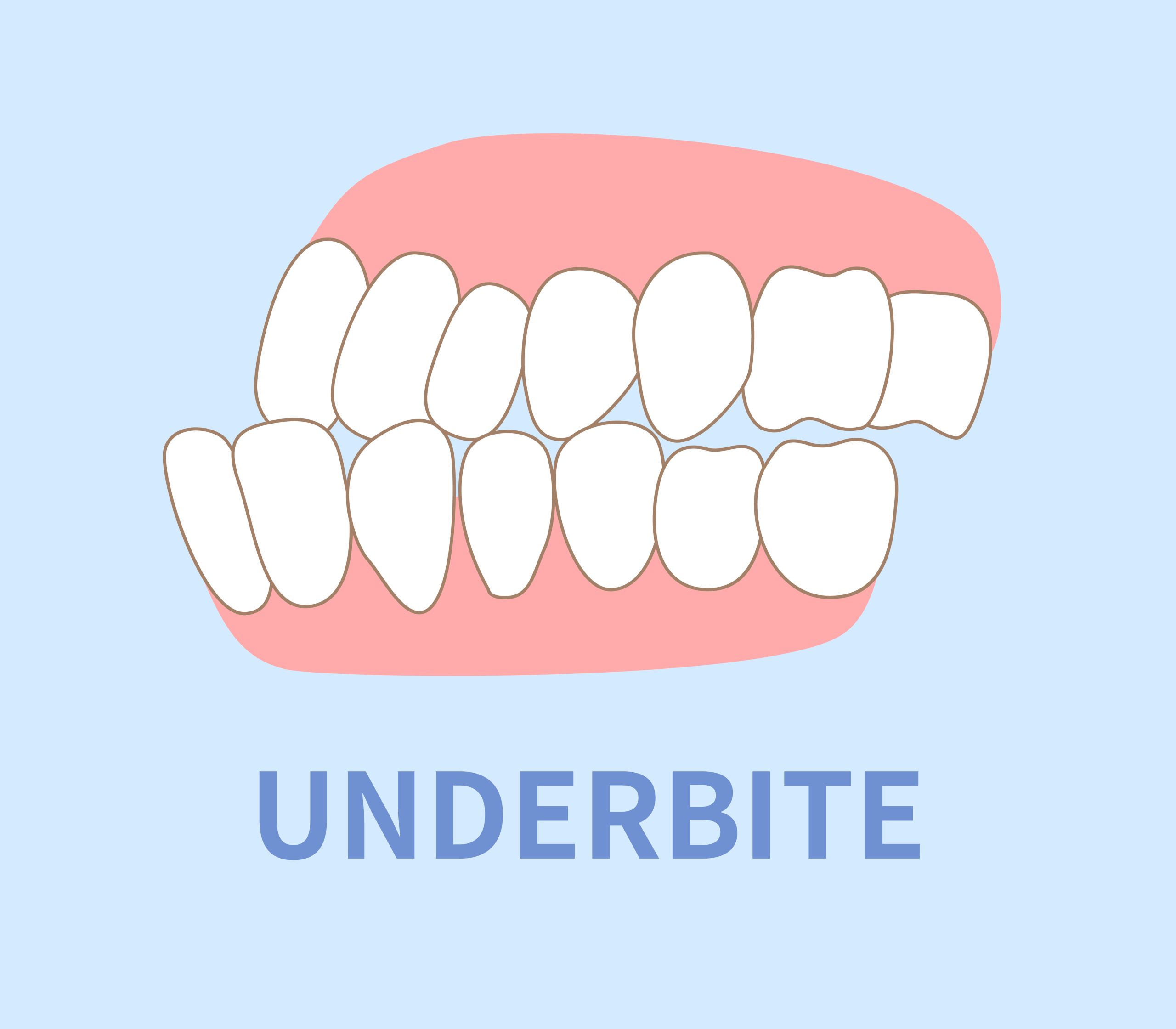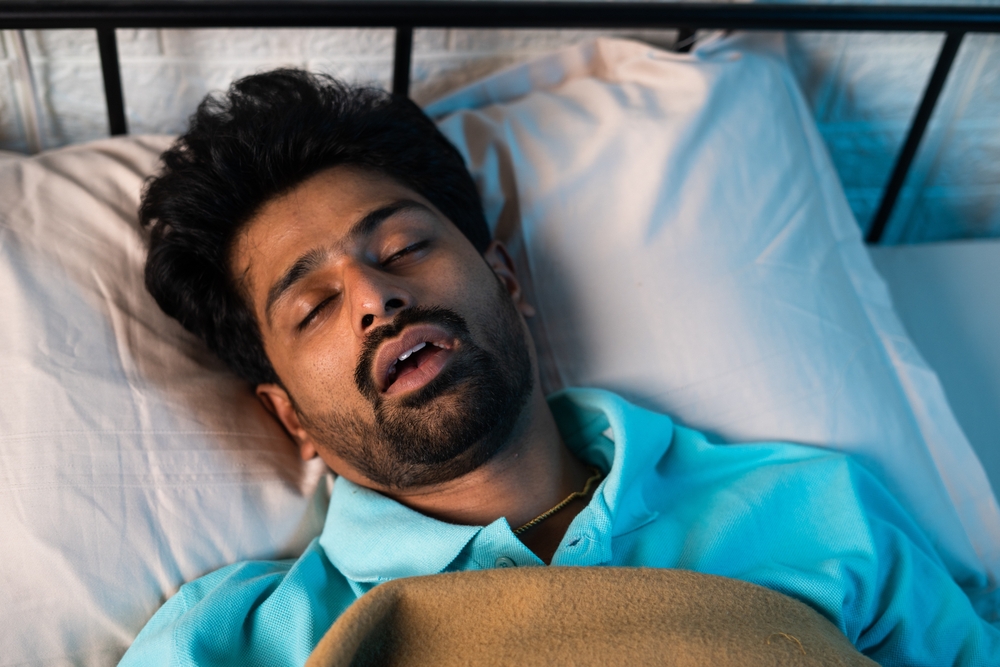1812 E. Broadway St.
Pearland, TX 77581
Are persistent bite issues impacting your daily life? Difficulty chewing, speaking, or feeling self-conscious about your smile could indicate an underbite—a common dental misalignment that affects both oral function and aesthetic appearance. Invisalign offers a modern, discreet, and highly effective orthodontic solution to address these challenges.
Pearland Invisalign dentists, Drs. Rushi Dave and Mili Shah, skilled dental professionals at Pearland Dental Group, provide personalized treatment plans designed to meet your unique dental needs. Our comprehensive approach ensures you’ll achieve a healthier, more confident smile.
Call our Pearland dental practice at (281)993-9900 to explore your transformation options and learn how we use Invisalign to fix an underbite.
An underbite, or prognathism, is a specific type of dental condition characterized by the lower front teeth and jaw protrusion. When the mouth is closed, the lower front teeth extend beyond the upper front teeth, creating a distinctive misalignment that can impact multiple aspects of oral health and personal confidence.
When someone has an underbite, the misalignment of the lower jaw protruding beyond the upper jaw can interfere with proper tongue placement and mouth positioning during speech. This can cause pronunciation difficulties, lisping, or unclear articulation. The improper positioning of teeth makes it harder to form certain sounds correctly, potentially leading to speech impediments that can impact communication and confidence.
Chronic mouth breathing can be significantly exacerbated by an underbite, primarily due to the misalignment of the jaw that narrows the upper airway. This narrowing makes it difficult for individuals to breathe through their nose, often forcing them to rely on mouth breathing as a compensatory mechanism.
As a result, mouth breathing can lead to dry mouth, increasing the risk of tooth decay and gum disease due to reduced saliva production, which is essential for neutralizing acids and washing away bacteria. Additionally, in children, mouth breathing can alter facial development, leading to elongated features and further jaw misalignment.
Moreover, mouth breathing can contribute to sleep disturbances such as snoring and sleep apnea, as the obstructed airway complicates proper breathing during sleep. This can result in poor sleep quality and daytime fatigue. The lack of nasal breathing also bypasses the natural filtration process of the nose, increasing susceptibility to respiratory infections.
An underbite creates an unnatural bite pattern where the teeth don’t align properly. The improper position of the teeth means that when a person bites or chews, the teeth experience uneven pressure and friction. Some teeth will bear more force than they should, leading to:
The improper position of the teeth produced by an underbite can make chewing food difficult. This can result in:
Underbites can significantly impact facial appearance and aesthetics, causing the lower jaw to protrude noticeably. This physical difference can lead to:
While treatment approaches vary, early intervention remains crucial. Orthodontic solutions like Invisalign® can effectively fix an underbite, particularly when dental problems are addressed during developmental stages.
Multiple factors contribute to underbite development, creating a complex interplay of genetic and environmental influences. Some of the factors that cause an underbite include:
Childhood habits and developmental issues can significantly impact jaw and teeth alignment:
Various medical conditions and circumstances can contribute to underbite development:
Addressing an underbite offers comprehensive advantages that extend beyond aesthetic improvements:
By addressing underbites through orthodontic treatment or orthognathic surgery, individuals can experience significant improvements in both form and function, contributing to better overall oral health and quality of life.
Invisalign provides a treatment option with a sophisticated approach to underbite correction, particularly for mild to moderate cases. Getting your teeth into the correct position with Invisalign involves several key steps:
Invisalign has emerged as a popular alternative to conventional metal braces for treating underbites, offering unique advantages and some limitations. Here’s a comprehensive look at the pros and cons of using Invisalign for underbite correction:
Underbites can trigger multiple health complications extending beyond dental concerns. Persistent misalignment of bottom teeth and top teeth also potentially leads to chronic jaw pain, compromised chewing functionality, and increased susceptibility to temporomandibular joint disorders. Additionally, improper bite alignment can accelerate dental wear, potentially necessitating more extensive future treatments.
Genetic inheritance plays a significant role in underbite development. Familial dental and skeletal patterns can make individuals more susceptible to jaw alignment problems. While not guaranteed, children with parents exhibiting underbite characteristics have a higher probability of developing similar structural variations.
Many mild underbite cases can be successfully addressed through a non-surgical orthodontic treatment option. Advanced treatments like Invisalign and traditional braces offer effective ways to fix an underbite for mild to moderate conditions. Comprehensive professional evaluation determines the most appropriate orthodontic treatment pathway, potentially avoiding surgical intervention.
While some underbite cases result from genetic predisposition, certain preventative measures can help deter developmental risks. Early childhood habit modification, such as discouraging prolonged thumb-sucking or pacifier use, may help minimize orthodontic issues. Regular dental check-ups enable early detection and proactive management of potential structural alignment issues too.
Don’t let an untreated underbite compromise your quality of life. Pearland Dental Group offers cutting-edge solutions to fix an underbite and transform your smile and dental health—our team, led by Drs. Dave and Shah, provides personalized care tailored to fix underbite and to your unique needs.
Serving Pearland and surrounding areas including Fresno, Houston, Alvin, and League City, we’re committed to helping you achieve the confident, healthy smile you deserve. Contact our Pearland Dental Group at (281)993-9900 and schedule your comprehensive consultation at our Pearland dental office today. Your journey to a transformed smile starts here!







Our clinic offers all kinds of services and constantly study new
technology to add new custom services to the list
Phone: (281)993-9900
Address: 1812 E. Broadway St. Pearland, TX 77581
Copyright © 2021 Pearland Dental Group | Managed by Now Media Group